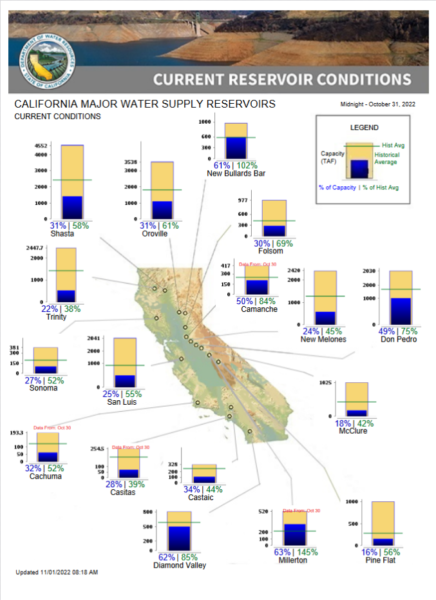A wrap-up of posts published on Maven’s Notebook this week …
Note to readers: Sign up for weekly email service and you will receive notification of this post on Friday mornings. Readers on daily email service can add weekly email service by updating their subscription preferences. Click here to sign up!
This week’s featured articles …
MONTHLY RESERVOIR REPORT for November 1st
A month into the new 2022-23 WY, not much has changed hydrologically for CVP/SWP reservoir storage. No measurable precipitation has occurred across the State and the EOY numbers from last month have simply continued to deplete Statewide carryover.
As of October 28th, total CVP reservoir storage was 3.36 million acre-feet (MAF), representing about 28% of total federal reservoir storage capacity. Relative to the 15-year average, however, current storage levels stand at 58%.
Click here to read the reservoir report.
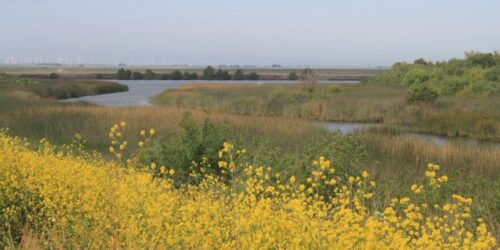 WEBINAR SUMMARY: Adaptive governance in the Delta
WEBINAR SUMMARY: Adaptive governance in the Delta
In California water news this week …
California’s water cops unprepared, overwhelmed in era of climate change, megadroughts
“Jim Scala needed the water. So he took it. As the third devastating summer of drought dragged on, the Siskiyou County rancher knew his irrigation district could be fined up to $10,000 a day if he and his neighbors defied a state cutback order and pumped water from the Shasta River onto their lands east of Yreka. So in mid-August, they turned them on. For roughly a week, they sucked out nearly two-thirds of the water flowing down the Shasta, home to one of California’s few runs of coho salmon. … While the Shasta River rebellion might have been the most brazen, a Sacramento Bee investigation reveals that farmers and other water users frequently ignore state drought regulations. The Bee interviewed dozens of farmers, policy experts, American Indian tribal members, environmentalists and regulators. It reviewed hundreds of pages of court rulings, regulatory filings and other public records. The Bee’s findings reveal a state regulatory system dramatically unprepared to address chronic water shortages and an ecosystem collapse. ... ” Read more from the Sacramento Bee here: California’s water cops unprepared, overwhelmed in era of climate change, megadroughts
‘100 years in the making.’ Northern California farmers say water regulations not working
Some Siskiyou County farmers and ranchers ignored an order to curtail water use, and others became entangled in regulations. All are affected by the state’s strategy, severe drought and other agricultural factors. Two speak on Sept. 30, 2022. (Link to video)
‘Death in the family.’ California tribe anguished as water, sacred fish vanish from rivers
“Carrying a pair of 20-foot wooden poles with a net strung between them, Ron Reed shimmied above the Klamath River across wooden boards perched between slippery boulders. He paused and stared into the white foam. With a lunge, Reed, a 60-year-old fisherman who belongs to the Karuk Tribe, thrust his dip net into the Klamath’s swirling current. His back and his ropey arms strained against the fir poles as he heaved up two Chinook salmon that thrashed and twisted inside the net. By the end of the morning, Reed and his son-in-law Asa Donahue caught seven salmon. … ” Read more from Sacramento Bee here: ‘Death in the family.’ California tribe anguished as water, sacred fish vanish from rivers
Hoopa Valley Tribe sues US over California water contracts
 “The Hoopa Valley Tribe alleged in a lawsuit Monday that the federal government is violating its sovereignty and failing to collect money from California farms that rely on federally supplied water to pay for damages to tribal fisheries. The tribe, which has a reservation in northwest California, says in its lawsuit against the Biden administration that the Trinity River that it relies on for food and cultural purposes has been decimated by decades of the federal government diverting water. The suit alleges the U.S. Department of the Interior has failed to follow laws that require the contractors who use that water to pay money for habitat restoration projects. It says those contractors owe $340 million for environmental restoration work along the Trinity River and other places damaged by water diversions. … ” Read more from the Associated Press here: Hoopa Valley Tribe sues US over California water contracts
“The Hoopa Valley Tribe alleged in a lawsuit Monday that the federal government is violating its sovereignty and failing to collect money from California farms that rely on federally supplied water to pay for damages to tribal fisheries. The tribe, which has a reservation in northwest California, says in its lawsuit against the Biden administration that the Trinity River that it relies on for food and cultural purposes has been decimated by decades of the federal government diverting water. The suit alleges the U.S. Department of the Interior has failed to follow laws that require the contractors who use that water to pay money for habitat restoration projects. It says those contractors owe $340 million for environmental restoration work along the Trinity River and other places damaged by water diversions. … ” Read more from the Associated Press here: Hoopa Valley Tribe sues US over California water contracts
Conservation groups prompt federal review of San Joaquin River exchange contract for first time in 54 years
“Defenders of Wildlife applauded a decision by the U.S. Bureau of Reclamation to request a renegotiation of a decades-old use contract for the San Joaquin River that could spark stronger protection for wildlife and drought management. Defenders and the Natural Resources Defense Council (NRDC) urged the Bureau of Reclamation to reform its water supply contract with the San Joaquin River Exchange Contractors Water Authority before the conclusion of the renegotiation period. On Oct. 14, the Bureau sent a letter to the Exchange Contractors, four days before the deadline, with its intent to renegotiate. Though the contract may be reviewed every five years, it has not been reviewed since 1968. … ” Read more from Defenders of Wildlife here: Conservation groups prompt federal review of San Joaquin River exchange contract for first time in 54 years
He was accused of stealing huge amounts of water over 23 years. Here’s why no one noticed
“California’s water police struggle to track where water is flowing and whether someone is taking more than they’re supposed to. A criminal case unfolding in the San Joaquin Valley underscores how the federal government seems to have similar problems. Prosecutors say they uncovered a massive water theft that went on for 23 years without anyone noticing. Earlier this year a federal grand jury indicted Dennis Falaschi, the former general manager of the Panoche Water District in the western San Joaquin Valley, on charges of conspiracy, theft of government property and filing false tax returns.According to prosecutors, Falaschi engineered a brazen scheme to steal $25 million worth of water from the U.S. Bureau of Reclamation, operator of the Central Valley Project. … ” Read more from the Sacramento Bee here: He was accused of stealing huge amounts of water over 23 years. Here’s why no one noticed
How are California’s cities managing the drought?
“The 2022 water year just ended, and the numbers confirm our suspicions: The 2020–22 drought has been the driest three-year period on record. The drought has harmed California’s freshwater ecosystems, dried up thousands of drinking water wells in small communities, and led to fallowing of hundreds of thousands of acres of cropland. Cities, however, have fared better: As in the 2012–16 drought, they have avoided major supply disruptions. But you wouldn’t know this from the news, where the main story is that urban water agencies have failed to meet Governor Newsom’s July 2021 call for a 15% voluntary reduction in water use. So are cities failing to manage the current drought? Or are we focusing on the wrong metrics? … ” Read more from the PPIC here: How are California’s cities managing the drought?
Why hasn’t a dam been built in more than 40 years?
“Today’s Why Guy question comes from Tricia Towne: “Why hasn’t a dam been built in over 50 years?” This is a popular question to the Why Guy. The short answer is all the best sites to build dams already have dams on them. Most were built in the 40s, 50s and 60s to prevent catastrophic local flooding. The last regional dam built, the New Melones Reservoir north of Sonora was completed in 1980, about 42 years ago. Now, with extreme drought, we need dams to store water. Well, guess what? Looks like we’re getting a new dam at the Sites Reservoir just west of Maxwell in Colusa County. President Joe Biden just dedicated $30 million to the project, which is targeted for a 2024 groundbreaking. ... ” Read more from ABC Channel 10 here: Why hasn’t a dam been built in more than 40 years?
New report highlights key factors affecting State Water Project deliveries
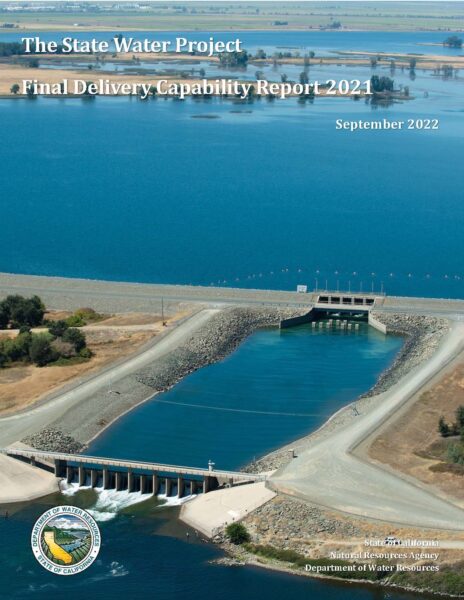 “As California enters a possible fourth dry year, the Department of Water Resources (DWR) has released its biennial report to help water managers better understand how key factors, like climate change and regulatory and operational considerations, affect the operation of the State Water Project (SWP) under historical and future scenarios. The State Water Project provides water to 27 million Californians and 750,000 acres of farmland throughout the state. In the State Water Project Final Delivery Capability Report 2021, there are estimates on the SWP’s water delivery capability for current and future conditions based on three major factors: the effects of population growth on California’s balance of water supply and demand; state legislation intended to help maintain a reliable water supply; and impact of potential climate change-driven shifts in hydrologic conditions. ... ” Read more from DWR News here: New report highlights key factors affecting State Water Project deliveries
“As California enters a possible fourth dry year, the Department of Water Resources (DWR) has released its biennial report to help water managers better understand how key factors, like climate change and regulatory and operational considerations, affect the operation of the State Water Project (SWP) under historical and future scenarios. The State Water Project provides water to 27 million Californians and 750,000 acres of farmland throughout the state. In the State Water Project Final Delivery Capability Report 2021, there are estimates on the SWP’s water delivery capability for current and future conditions based on three major factors: the effects of population growth on California’s balance of water supply and demand; state legislation intended to help maintain a reliable water supply; and impact of potential climate change-driven shifts in hydrologic conditions. ... ” Read more from DWR News here: New report highlights key factors affecting State Water Project deliveries
Zero Delta smelt found in Midwater Trawl Survey for seventh September in a row
 “For the seventh September in a row, the California Department of Fish and Wildlife (CDFW) has caught zero Delta smelt during its Fall Midwater Trawl Survey of the Sacramento-San Joaquin River Delta. The last September when Delta smelt, an indicator species that demonstrates the relative health of the San Francisco Bay-Delta Estuary, were found in the survey was in 2015, when 5 were caught by CDFW biologists. The last year when any Delta smelt were caught during the entire four-month survey was in 2016, when a total of 8 Delta smelt were reported. The final results of the four month survey of pelagic (open water) fish species, from September through mid-December, won’t be available from the CDFW until late December or early January. … ” Continue reading from Dan Bacher at the Daily Kos here: Zero Delta smelt found in Midwater Trawl Survey for seventh September in a row
“For the seventh September in a row, the California Department of Fish and Wildlife (CDFW) has caught zero Delta smelt during its Fall Midwater Trawl Survey of the Sacramento-San Joaquin River Delta. The last September when Delta smelt, an indicator species that demonstrates the relative health of the San Francisco Bay-Delta Estuary, were found in the survey was in 2015, when 5 were caught by CDFW biologists. The last year when any Delta smelt were caught during the entire four-month survey was in 2016, when a total of 8 Delta smelt were reported. The final results of the four month survey of pelagic (open water) fish species, from September through mid-December, won’t be available from the CDFW until late December or early January. … ” Continue reading from Dan Bacher at the Daily Kos here: Zero Delta smelt found in Midwater Trawl Survey for seventh September in a row
California court blocks harmful dam project in Stanislaus County
“A judge has rejected plans to build a new dam in the Central Valley, ordering the Del Puerto Water District to vacate its approval of the project. The Stanislaus County Superior Court ruling stated that the district’s approval of the Del Puerto Canyon Reservoir was based on an insufficient environmental study and violated the California Environmental Quality Act. The district failed to adequately address the relocation of Del Puerto Canyon Road, which was a key part of the project, according to Monday’s ruling. “Considering how much this dam would damage local wildlife and an already strained ecosystem, the court made the right call in denying this project,” said Peter Broderick, an attorney at the Center for Biological Diversity. “Agencies are required to closely scrutinize major infrastructure projects before they’re built, and the Del Puerto Water District failed to do that.” … ” Read more from the Center for Biological Diversity here: California court blocks harmful dam project in Stanislaus County
Del Puerto leader says court ruling on West Side reservoir is minor setback
“A court ruling on the proposed Del Puerto Reservoir is a minor setback, a leader on the project said Wednesday. The ruling involved only the environmental effects of relocating Del Puerto Canyon Road from the reservoir site, said Anthea Hansen, general manager of the Del Puerto Water District. The plaintiffs also had cited concerns about wildlife, recreation and excessive pumping from the Sacramento-San Joaquin Delta. “I was very pleased with the ruling, actually,” Hansen said in a phone interview. She added that the need to reexamine the road issue would not interfere with the scheduled completion of the $500 million project by 2027. … ” Read more from the Modesto Bee here: Court orders more study on Del Puerto Reservoir proposal | Read via AOL News
Calif. cities are breaking the bank to buy water. S.F. gets Yosemite water for $30k. A new bill aims to raise its price.
 “As California trudges through its second year of intense drought, forcing local communities to raid contingency funds to pay sky-high retail prices for water supplies, Federal lawmakers are revisiting a deal with the City of San Francisco deemed to be “too-good-to-be-true.” A new bill, introduced by Rep. Connie Conway (R-Tulare), seeks to bring some equity back to one of California’s oldest and biggest water storage deals between the Federal government and the state’s historic big city. For a century, Hetch Hetchy, a dammed up valley deep in Yosemite National Park, has served as a singular lifeline for San Francisco’s water and energy supplies. Thursday, Conway introduced the Yosemite National Park Equal Access and Fairness Act, seeking to reorient the deal between the Feds and San Francisco when it comes to Hetch Hetchy. … ” Read more from the San Joaquin Valley Sun here: Calif. cities are breaking the bank to buy water. S.F. gets Yosemite water for $30k. A new bill aims to raise its price.
“As California trudges through its second year of intense drought, forcing local communities to raid contingency funds to pay sky-high retail prices for water supplies, Federal lawmakers are revisiting a deal with the City of San Francisco deemed to be “too-good-to-be-true.” A new bill, introduced by Rep. Connie Conway (R-Tulare), seeks to bring some equity back to one of California’s oldest and biggest water storage deals between the Federal government and the state’s historic big city. For a century, Hetch Hetchy, a dammed up valley deep in Yosemite National Park, has served as a singular lifeline for San Francisco’s water and energy supplies. Thursday, Conway introduced the Yosemite National Park Equal Access and Fairness Act, seeking to reorient the deal between the Feds and San Francisco when it comes to Hetch Hetchy. … ” Read more from the San Joaquin Valley Sun here: Calif. cities are breaking the bank to buy water. S.F. gets Yosemite water for $30k. A new bill aims to raise its price.
Another winter storm is about to hit California. Here’s a timeline of its impacts
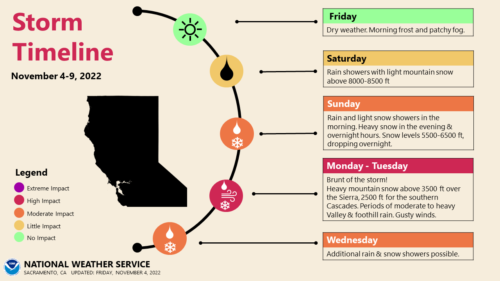
“Northern California is in the midst of a wet weather pattern that shows no signs of slowing down. A cluster of rain showers swept through the Bay Area and Sacramento Valley on Tuesday and Wednesday, leaving behind a trail of rainfall totals ranging from a few tenths of an inch to almost 3 inches along some of the coastal mountains. These same showers then brought over a foot of snow to the Sierra Nevada and Southern Cascades. It goes without saying that this pattern has been nothing short of a fire suppressor. Now that another storm is coming in from the Pacific Northwest this weekend, it’s looking more likely that California will be tapping into some beneficial rains and snow. … ” Read more from the San Francisco Chronicle here: Another winter storm is about to hit California. Here’s a timeline of its impacts
SEE ALSO: Northern California weather update: Region braces for more rain, snow and frost
Toxic algal bloom solution targets water from San Joaquin River
“The San Joaquin River that passes Manteca and Lathrop just as it reaches the Delta is ground zero for yet another fight over water. This time it’s to reduce the growing threat of toxic algal bloom in the Delta that pose a threat to humans and pets alike. And if emergency petitions filed last month with the State Water Control Resources Board succeed, it will throw a major wrench into state efforts to deal with allocating dwindling water supplies as California enters its fourth year of drought. … ” Read more from the Manteca Bulletin here: Toxic algal bloom solution targets water from San Joaquin River
As climate change erodes western snowpacks, one watershed tries a ‘supershed approach’ to shield its water supply
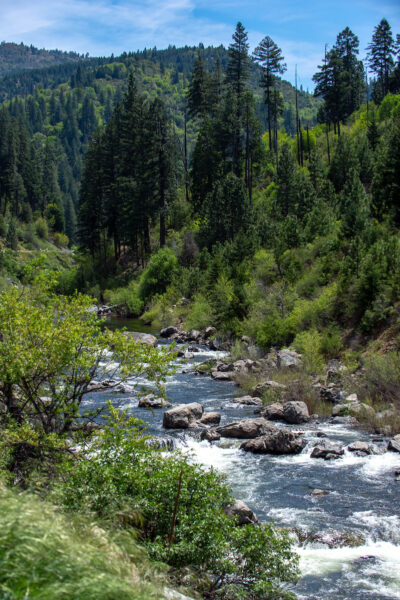 “The foundation of California’s water supply and the catalyst for the state’s 20th century population and economic growth is cracking. More exactly, it’s disappearing. Climate change is eroding the mountain snowpack that has traditionally melted in the spring and summer to fill rivers and reservoirs across the West. Now, with less precipitation falling as snow and that snow melting faster and earlier in parts of major mountain ranges like California’s Sierra Nevada and the Rockies in the West, managers of a major Sierra Nevada watershed east of Sacramento are replumbing their water systems to better handle bursts of rain instead of trickling snowmelt. Their “Supershed Approach” to replace the loss of the once-reliable snowmelt is being touted as a possible model for other Western watersheds that are expected to experience stronger, more frequent snow droughts. … ” Read more from Western Water here: As climate change erodes western snowpacks, one watershed tries a ‘supershed approach’ to shield its water supply
“The foundation of California’s water supply and the catalyst for the state’s 20th century population and economic growth is cracking. More exactly, it’s disappearing. Climate change is eroding the mountain snowpack that has traditionally melted in the spring and summer to fill rivers and reservoirs across the West. Now, with less precipitation falling as snow and that snow melting faster and earlier in parts of major mountain ranges like California’s Sierra Nevada and the Rockies in the West, managers of a major Sierra Nevada watershed east of Sacramento are replumbing their water systems to better handle bursts of rain instead of trickling snowmelt. Their “Supershed Approach” to replace the loss of the once-reliable snowmelt is being touted as a possible model for other Western watersheds that are expected to experience stronger, more frequent snow droughts. … ” Read more from Western Water here: As climate change erodes western snowpacks, one watershed tries a ‘supershed approach’ to shield its water supply
Dairy, drought and the drying of the American West
“California produces more milk and cheese than anywhere else, including Wisconsin, the second biggest producer. California is in the middle of a megadrought, and dairy cows need loads of water. Some of that water is for the animals to drink and wash, but most of the water consumed by dairy is connected to what cows eat, in the form of feed and forage. Much of the region is situated in arid or semi-arid lands, and with the effects of climate change it’s becoming drier and more susceptible to deep drought. The U.S. Southwest’s 22-year megadrought has been determined the driest in 1,200 years, and is contributing to the water crisis in the Colorado River Basin. With California the biggest agricultural producer in the arid West, it’s essential to understand what’s grown and fed to dairy cattle there, and the water required to grow that feed. … ” Read more from Salon Magazine here: Dairy, drought and the drying of the American West
DWR provides funding to city of Coalinga for emergency water purchase
“The Department of Water Resources (DWR) today awarded $1.2 million to the City of Coalinga for an emergency water transfer to supply the community through the winter months. Though rain is in the forecast for some parts of the state, California remains in extreme drought. The City of Coalinga, located in Fresno County, had previously notified the U.S. Bureau of Reclamation that it could run out of water by December without additional supplies. In coordination with Reclamation, which supplies water to the city via the Central Valley Project, Coalinga was able to purchase 600 acre-feet of water for approximately $1.1 million from the Patterson Irrigation District. … ” Read more from DWR News here: DWR provides funding to city of Coalinga for emergency water purchase
How decades of hard-earned protections and restoration reversed the collapse of California’s treasured Mono Lake
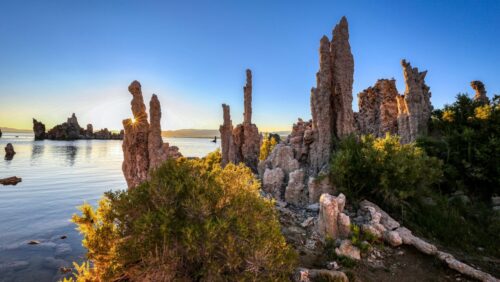
“When Rose Nelson camped along lower Rush Creek in the summer of 2017, the water was flowing as high and fast as anyone could remember. The rumble and roar of the creek, she said, was the joyful sound of nature healing. … High flows are a big part of restoring a landscape marred by decades of water diversions from the creek to Los Angeles, she said. … Equally important, the flows raised the level of Mono Lake, a bird haven and the centerpiece of an ambitious restoration project that includes Rush Creek and other streams feeding the lake. In 1994, under court orders, the state finalized a plan to repair the damage to the 780-square mile Mono Basin watershed driven by the human-caused drought. Without protection, the lake’s ecosystem probably would have collapsed sometime early in the 2000s under the combined pressure of water diversions and global warming. Its persistence suggests that protected ecosystems are more resilient than vulnerable ones, and that helping nature heal itself more effectively prevents their decline than drastic technological and engineering interventions. ... ” Read more from Inside Climate News here: How decades of hard-earned protections and restoration reversed the collapse of California’s treasured Mono Lake
State Water Board adopts standards that would reduce water loss by nearly 35%
“The State Water Resources Control Board has adopted new performance standards for urban retail water suppliers—the utilities that provide water to people in California cities—that it estimates will save about 88,000 acre–feet of water per year, or enough to supply over 260,000 households, by requiring suppliers to monitor and reduce leakage in their distribution systems. “As climate change induces hotter and drier conditions, we must conserve water as much as possible and become more efficient on all fronts,” said E. Joaquin Esquivel, chair of the State Water Board. “Water loss from distribution systems for drinking water is often out of sight. The new performance standards will not only reduce that water loss by over a third, they will also cut energy costs and greenhouse gas emissions by lowering the amount of water needing to be treated and distributed.” … ” Read more from the State Water Board here: State Water Board adopts standards that would reduce water loss by nearly 35%
In commentary this week …
DWR’s risky prediction that CA’s future will be wetter
Doug Obegi, Director of California River Restoration at the NRDC, writes, “For years, scientists and State officials have warned of the need to prepare for a hotter, drier future as a result of climate change. Earlier this year, Governor Newsom released his water supply strategy for the State needs to adapt to a hotter, drier future with climate change, explaining that “DWR estimates a 10% reduction in water supply by 2040 … consider[ing] increased temperatures and decreased runoff due to a thirstier atmosphere, plants, and soil.” (Emphasis added) Despite these public statements, the California Department of Water Resources’ publicly available modeling predicts that by 2040, climate change will increase runoff and make California wetter. This modeling, which is being widely used by state and federal agencies, means agencies are assuming more water than there is today as a result of climate change, leaving us all dangerously unprepared if the climate is indeed drier in the future. … ” Read more from the NRDC here: DWR’s risky prediction that CA’s future will be wetter
California’s water strategy: A marvelous action plan for our climate future
Director of ByWater Institute at Tulane University, writes, “Too much climate change resource planning is rooted in the present — which means it’s not adaptive to the threats and (dare I say it?) opportunities of a future under climate change’s increasing extremes. But now California actually has a water supply plan that prepares for that future. California Governor Gavin Newsom’s recently released California Water Supply Strategy reflects an adaptive approach that takes the state much closer to securing water in an age of climate extremes — not by managing for increasing water scarcity, but by exploiting the opportunities climate change gives us to create water abundance. It’s a marvelous action plan that’s future-forward, and it offers ideas that every other state should consider. … ” Read more from Forbes here: California’s water strategy: A marvelous action plan for our climate future
Editorial: Consolidate water boards across California
The Southern California News Group writes, “Why are there some 1,286 water districts and agencies in California, governed by elected and appointed officials, many hundreds of which are in the four counties covered by our newspapers in Southern California? A naif might say in order to provide local control over how agricultural, urban and suburban residents get access to the most precious resource in the West. Given recent news of malfeasance at astounding levels in these crucial and yet little-noticed and secretive bureaucracies, a cynic might say they exist in order to provide wildly high salaries for their electeds and their managers — and that’s before, even, the illegal corruption in which too many of these officials traffic. By our lights, the cynic would sadly be correct. … ” Read more from the LA Daily News here: Editorial: Consolidate water boards across California
Desalination will be key to California’s water future. It needs to improve first
Dr. Grayson Zulauf is a clean energy entrepreneur and CEO of Resonant Link, writes, “If the climate crisis is coming, the water crisis is already here. As rice fields were fallowed in California, Lake Mead water levels almost sunk so low that Hoover Dam could no longer generate power, and life-threatening toxic dust blew off the dried-up Salton Sea. Thirty percent of the world population will face water shortages of some kind by 2025. Things are only going to get worse. Climate change will cause the Colorado River, which supplies water for 40 million people, irrigates 6 million acres of farmland and underpins a quarter of the nation’s economy, to lose more than half of its flows by 2100. The depletion of the Ogallala Aquifer in the Midwest threatens agriculture so radically that serious proposals have explored a water pipeline from Louisiana. … ” Read more from Cal Matters here: Desalination will be key to California’s water future. It needs to improve first
Dan Walters: Feds demand Colorado River water cutbacks
“One must wade through a thicket of bureaucratic jargon to find it, but on Friday federal officials issued what appears to be a serious warning to California and other states that use water from the highly stressed Colorado River: If they cannot agree on sharp reductions in diversions of the Colorado’s water, the feds will impose them unilaterally. It’s the latest wrinkle in decades of interstate squabbling over the river, which has become more heated as the river’s flows continue to decline and conditions in its two major reservoirs, Lake Mead and Lake Powell, reach the crisis stage. The federal Bureau of Reclamation wants California, Arizona and Nevada to reduce diversions by at least 2 million acre-feet a year and as much as 4 million, but negotiations have been fruitless. California, which takes the most water from the river, by far, has offered just a 400,000 acre-foot reduction. … ” Read more from Cal Matters here: Dan Walters: Feds demand Colorado River water cutbacks
Senator Kelly is wrong on all counts concerning California and the Colorado River
The Desert Review editorial board writes, “Arizona Senator Mark Kelley wrote a letter October 25 to Deb Haaland, U.S. Department of Interior Secretary, asking her to punish the people and communities surrounding the Salton Sea, to punish the migratory birds and fish that depend on the sea for subsistence because he is in a fight for his political seat against a contender that could beat him. The tens of thousands of people living around the Salton Sea experience the highest rates of asthma in the State of California from the drying sea that leaves behind toxic waste which become airborne as winds kick up. As the sea dries, the water turns saltier, killing off fish and affecting migratory birds that depend on the Salton Sea as they journey north. Kelly asked the federal government in the letter to withhold promised funds for the Salton Sea that would mitigate these dire situations. He shows a careless disregard for life, fish, birds, and tourists. … ” Read more from the Desert Review here: Senator Kelly is wrong on all counts concerning California and the Colorado River
Advanced recycling is booming except in California. A new plastics law is to blame
Robert Lapsley, president of the California Business Roundtable, writes, “In water-starved California, artificial turf is an environmental necessity, reducing the need for irrigation, mowing, pesticides and fertilizers. Last month, Gov. Gavin Newsom signed legislation incentivizing lawn owners to make the switch as local governments across the state offer rebates that help make synthetic turf more affordable. While those programs are great for protecting California’s scarce natural resources, they do nothing for landscapers and sports venues looking to dispose of artificial grass worn out by years of heavy use. A new private-sector recycling partnership could be a path forward, but the state’s shortsighted policies prevent greater adoption. … ” Read more from Cal Matters here: Advanced recycling is booming except in California. A new plastics law is to blame
In regional water news this week …
Friends of Eel River sues Humboldt County over groundwater pumping in lower Eel River
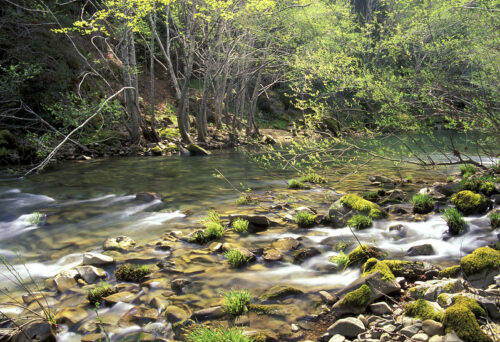 “A local environmental group is suing the county in order to get it to better regulate groundwater in the lower Eel River. Friends of the Eel River filed a civil suit against Humboldt County on Thursday in Humboldt County Superior Court “to secure protection for the public trust values at risk when groundwater pumping depletes surface flows in the Lower Eel River,” according to a release from the group. “As guardians of the public trust, our county leadership has the authority and the responsibility to enact an ordinance to curtail groundwater pumping in the Lower Eel when necessary,” Alicia Hamann, executive director of Friends of the Eel River, said in a statement. “Unfortunately what we’ve seen instead, under the guise of a grudging effort to comply with the state’s Sustainable Groundwater Management Act, has been continued denial by the county that groundwater use in the Lower Eel ever affects river flows, including efforts to obscure the county’s own data revealing the impacts on pumping on surface flows during dry periods.” … ” Read more from the Eureka Times-Standard here: Friends of Eel River sues Humboldt County over groundwater pumping in lower Eel River
“A local environmental group is suing the county in order to get it to better regulate groundwater in the lower Eel River. Friends of the Eel River filed a civil suit against Humboldt County on Thursday in Humboldt County Superior Court “to secure protection for the public trust values at risk when groundwater pumping depletes surface flows in the Lower Eel River,” according to a release from the group. “As guardians of the public trust, our county leadership has the authority and the responsibility to enact an ordinance to curtail groundwater pumping in the Lower Eel when necessary,” Alicia Hamann, executive director of Friends of the Eel River, said in a statement. “Unfortunately what we’ve seen instead, under the guise of a grudging effort to comply with the state’s Sustainable Groundwater Management Act, has been continued denial by the county that groundwater use in the Lower Eel ever affects river flows, including efforts to obscure the county’s own data revealing the impacts on pumping on surface flows during dry periods.” … ” Read more from the Eureka Times-Standard here: Friends of Eel River sues Humboldt County over groundwater pumping in lower Eel River
Friant Water Authority not concerned with low water levels
“While the water year began with one of the lowest storage amounts ever, the Friant Water Authority believes low water allocations will leave them largely unaffected. The Friant Water Authority contended with several factors when it came to water allocation last year. Chief among them was “water debt” owed to the State Water Project. This year, despite a deepening drought, the authority will no longer have that burden. “[Last water year] we were not building the Central Valley Project supply until the beginning of January. We had a big debt [of water] that we were paying back from last year…compared to this time, we have no debt, [so] we’re actually in a positive position,” water resources manager for Friant Water Authority Ian Buck-Mcleod, said. “So every drop of water that’s developing now, moving into the next calendar year is all going towards next year’s supply.” … ” Read more from the Foothills Sun-Gazette here: Friant Water Authority not concerned with low water levels
SLO County Planning Commission recommends denial of Paso basin ordinance
 “On Dec. 6, the San Luis Obispo County Board of Supervisors will consider a new ordinance for the Paso Robles Groundwater Basin that’s fiercely opposed by the agricultural industry and, as of Oct. 27, all five county planning commissioners. The SLO County Planning Commission voted unanimously on Oct. 27 to recommend that supervisors deny the new planting ordinance and, instead, extend the existing rules for the basin until 2028. “This is just a bad idea,” 2nd District Commissioner Mike Multari said at the meeting. “This is an ordinance that doesn’t really achieve any public benefit that overrides the environmental impacts, particularly those impacts on the groundwater basin.” ... ” Read more from New Times SLO here: SLO County Planning Commission recommends denial of Paso basin ordinance
“On Dec. 6, the San Luis Obispo County Board of Supervisors will consider a new ordinance for the Paso Robles Groundwater Basin that’s fiercely opposed by the agricultural industry and, as of Oct. 27, all five county planning commissioners. The SLO County Planning Commission voted unanimously on Oct. 27 to recommend that supervisors deny the new planting ordinance and, instead, extend the existing rules for the basin until 2028. “This is just a bad idea,” 2nd District Commissioner Mike Multari said at the meeting. “This is an ordinance that doesn’t really achieve any public benefit that overrides the environmental impacts, particularly those impacts on the groundwater basin.” ... ” Read more from New Times SLO here: SLO County Planning Commission recommends denial of Paso basin ordinance
Bridge replacement project creates pathway for Matilija Dam removal
 “Removing dams begins with building bridges — across rivers and between diverse stakeholder interests. The Santa Ana Boulevard Bridge Replacement Project is a great example of this important stakeholder collaboration and a critical step towards the complete removal of Matilija Dam. Ventura County Public Works hosted a ribbon cutting ceremony on October 17, 2022 to celebrate the Santa Ana Boulevard Bridge replacement. This new bridge brings us one step closer to a restored Ventura River watershed. CalTrout, as a part of the Matilija Coalition, along with Surfrider, Patagonia, Resources Legacy Fund, and Ojai Valley Land Conservancy worked together to help Ventura County Public Works secure $13 million to replace the Santa Ana Boulevard bridge. … ” Read more from Cal Trout here: Bridge replacement project creates pathway for Matilija Dam removal
“Removing dams begins with building bridges — across rivers and between diverse stakeholder interests. The Santa Ana Boulevard Bridge Replacement Project is a great example of this important stakeholder collaboration and a critical step towards the complete removal of Matilija Dam. Ventura County Public Works hosted a ribbon cutting ceremony on October 17, 2022 to celebrate the Santa Ana Boulevard Bridge replacement. This new bridge brings us one step closer to a restored Ventura River watershed. CalTrout, as a part of the Matilija Coalition, along with Surfrider, Patagonia, Resources Legacy Fund, and Ojai Valley Land Conservancy worked together to help Ventura County Public Works secure $13 million to replace the Santa Ana Boulevard bridge. … ” Read more from Cal Trout here: Bridge replacement project creates pathway for Matilija Dam removal
New push to shore up shrinking Colorado River could reduce water flow to California
“With the nation’s two largest reservoirs continuing to decline, federal officials announced plans Friday to revise their current rules for dealing with Colorado River shortages and pursue a new agreement to achieve larger reductions in water use throughout the Southwest. The Biden administration announcement represents a renewed push to scale back water use along a river that has shrunk significantly in the face of a 23-year megadrought worsened by global warming. With water levels dropping at Lake Powell, the Interior Department said operators of Glen Canyon Dam may need to release less water, which would affect flows in the Grand Canyon and accelerate the decline of Lake Mead. In order to protect public health and safety and the integrity of the system, the deparment said releases from Hoover Dam may also need to be reduced — which would shrink the amounts of water flowing to California, Arizona and Mexico. … ” Read more from the LA Times here: New push to shore up shrinking Colorado River could reduce water flow to California
EXPLORE MORE COVERAGE:
-
- Interior threatens Colorado River cuts, from E&E News
- Feds begin ‘expedited’ process to help save drought-stricken Colorado River, from CNN
- Feds start the clock on a plan that could deepen cuts on drought-stricken Colorado River, from the Arizona Republic
- Feds want the ability to cut back Colorado River reservoir releases, from Utah Public Radio
Announcements, notices, and funding opportunities …
NOTICE: November 1 Weekly Update on Curtailment Status of Water Rights and Claims in the Delta Watershed
Delta Stewardship Council Adopts Updated Administrative Procedures Governing Appeals
PUBLIC WORKSHOP/COMMENT: SAFER Drinking Water Program Report on Point-of-Use and Point-of-Entry Treatment
NOTICE: Issuance of Water Quality Certification Amendment for Lower Klamath Project License Surrender

